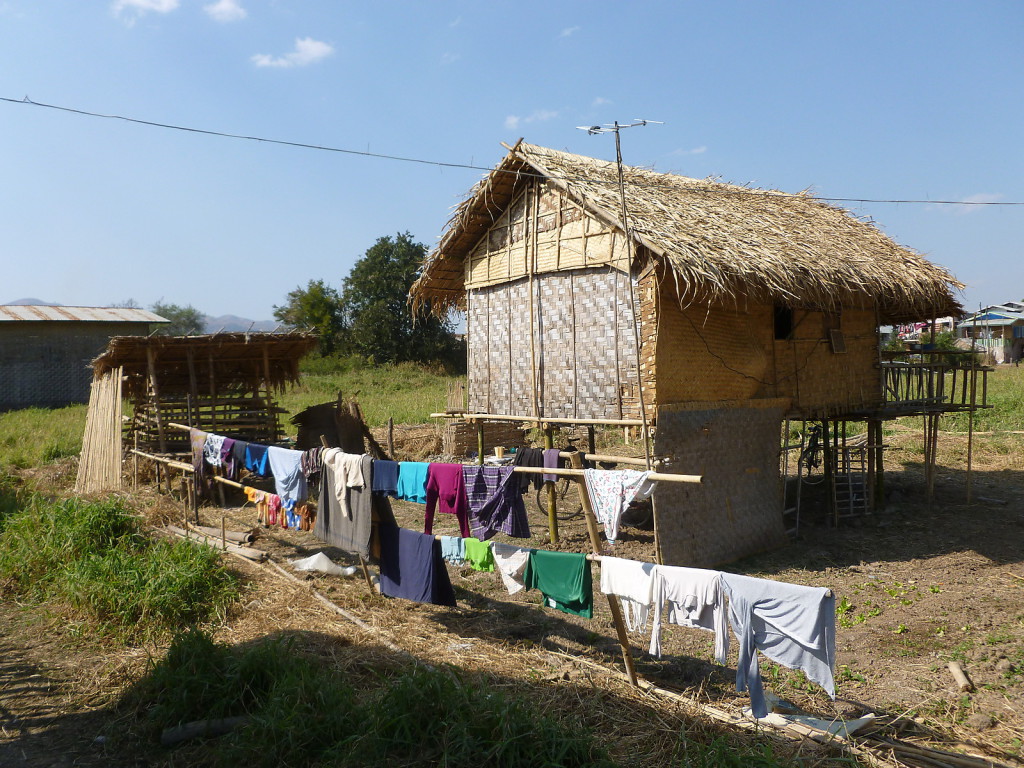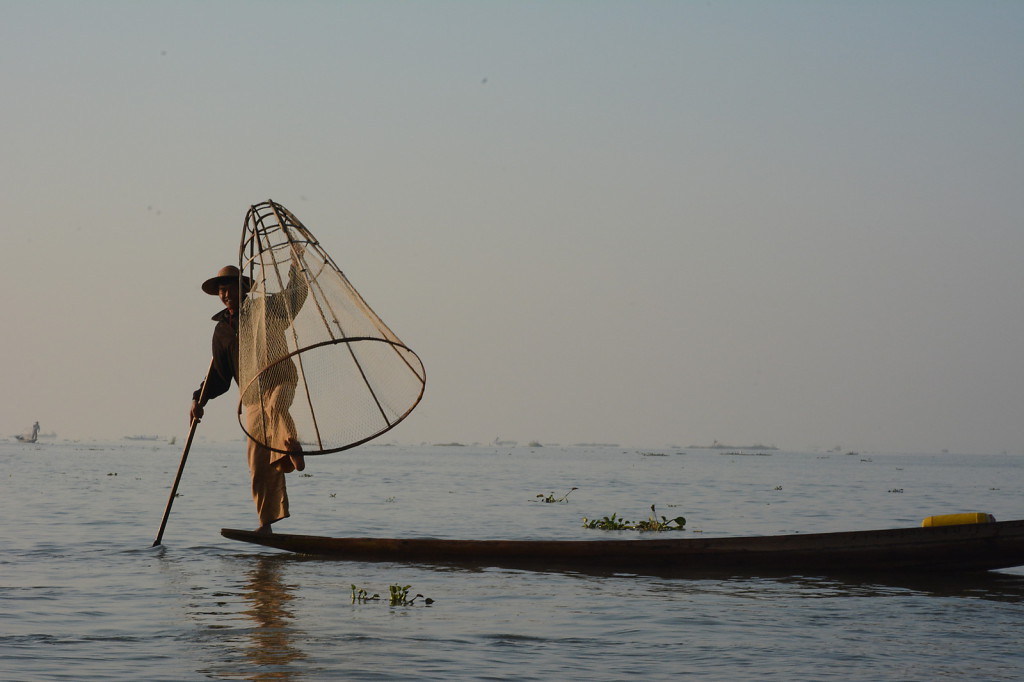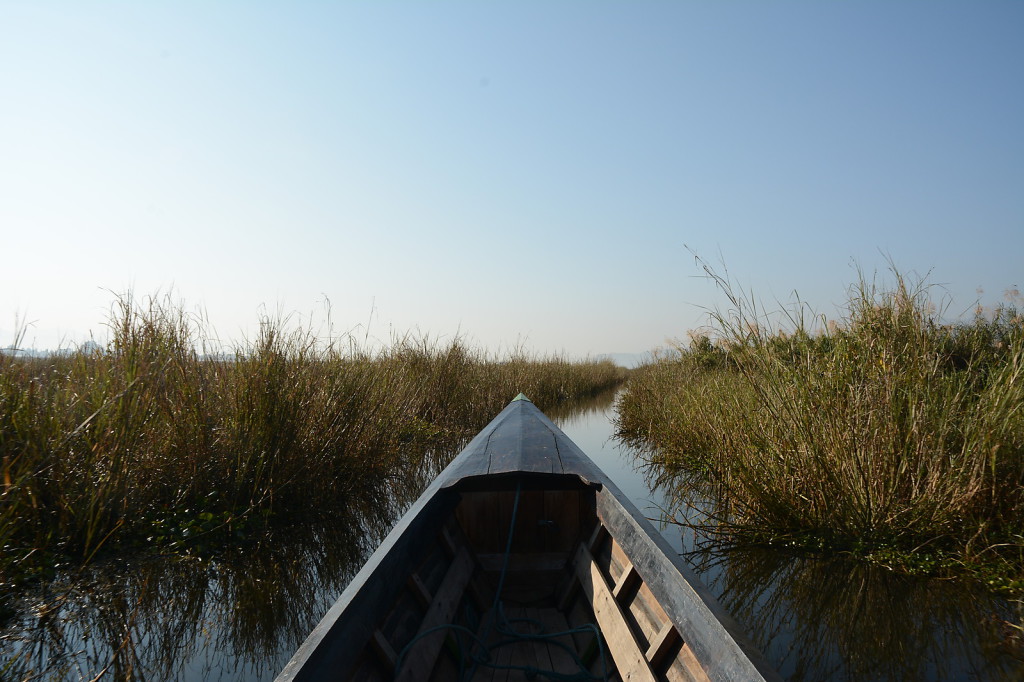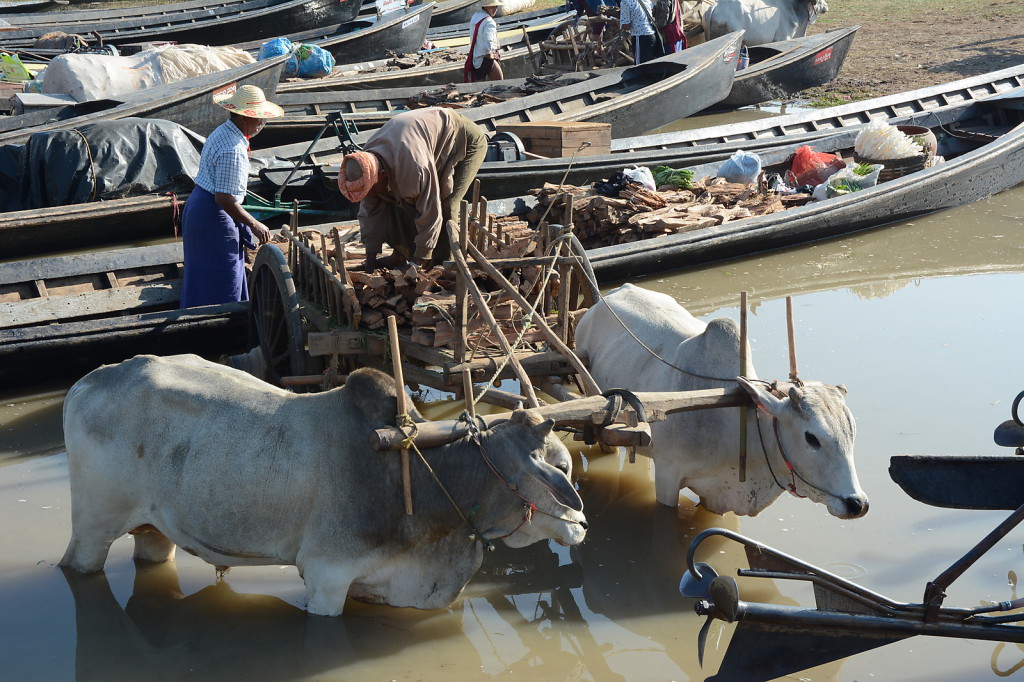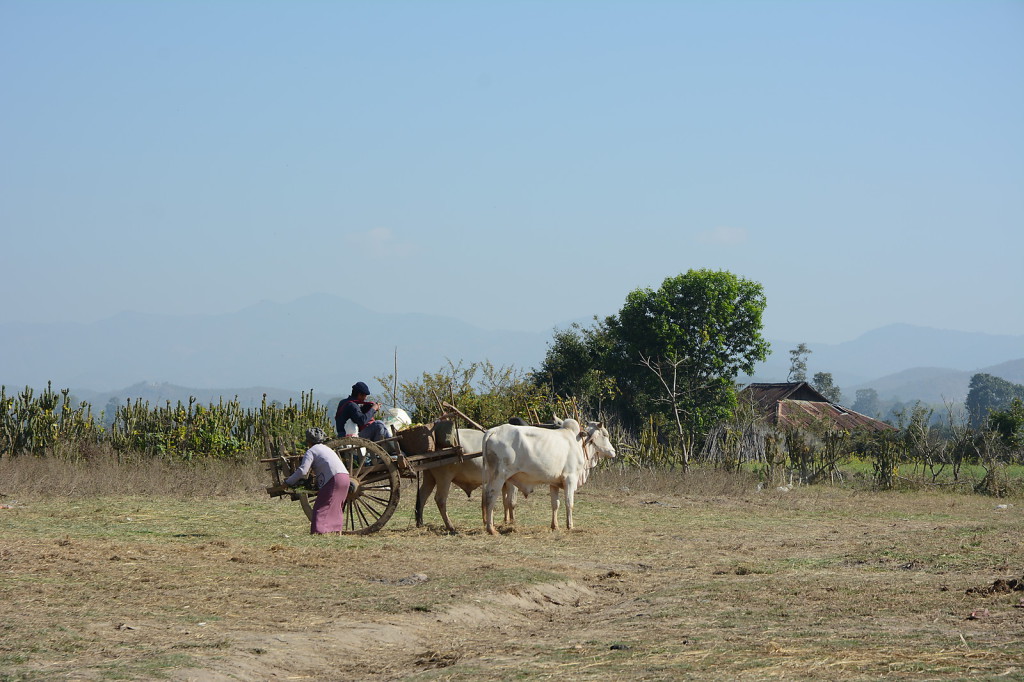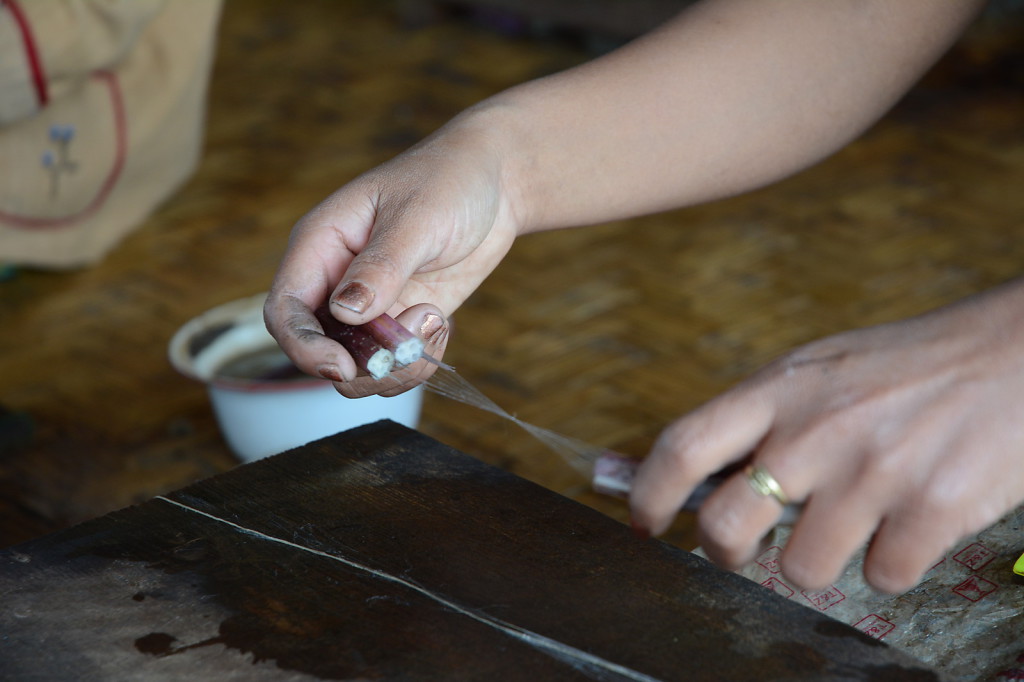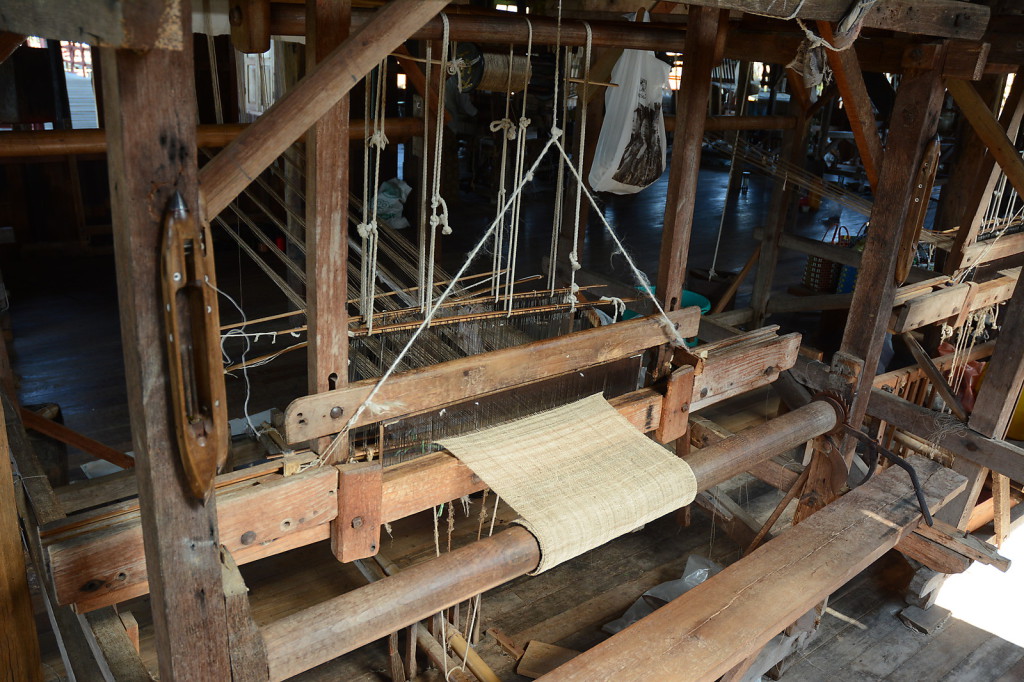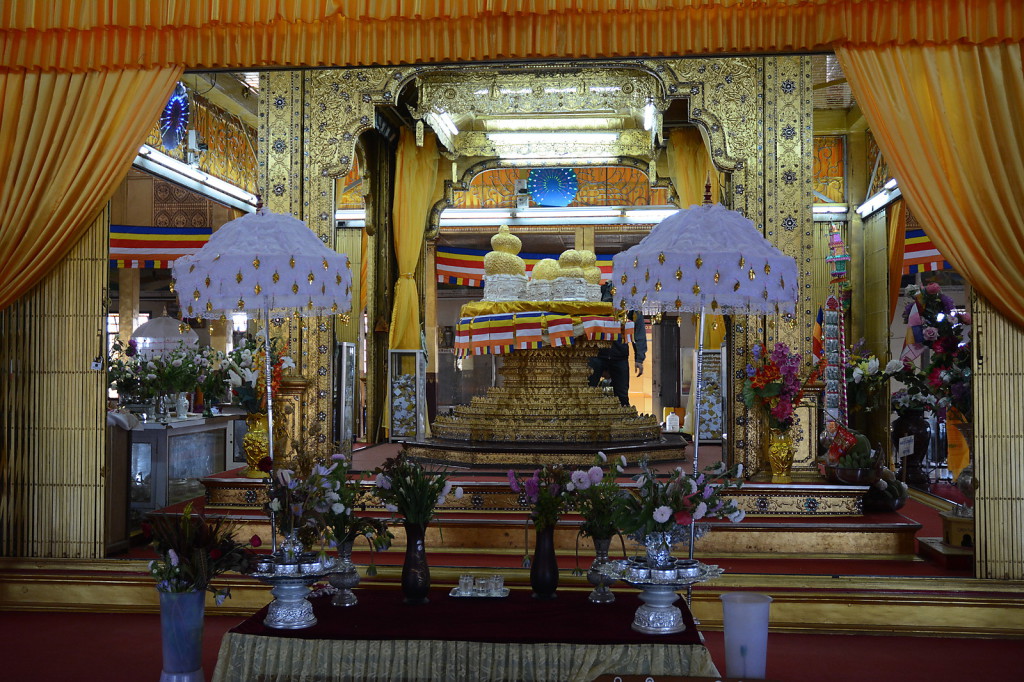From Yangon we dared to book a flight on KBZ Air, a domestic airline in Myanmar, promising to Fly Beyond Expectations! Reading their slogan on a barf bag seemed kind of comical… While the flight went without a hitch, experiencing Inle Lake and its surroundings was one of the absolute highlights of our trip. While already quite touristy, the region has still a lot of authenticity and going on a three-day trek through the villages gave some very interesting insights into daily Myanmar life in the countryside.
The airport in the Inle Lake area is located at Heho, a small town about an hour from the lake. The only mode of transport from the airport to Nyaungshwe, the gateway to the lake are taxis. Since we knew that we had to get a taxi, we checked out fellow passengers on the airplane who might also be in need of a ride. We found that the Swiss couple seated right behind us in the airplane, Sibylle and Klemens, were headed to the lake too and their notice to their hotel was on too short notice such that no driver showed up.
Since the competition for the main tourist attractions, boat rides on Inle Lake, has become huge, the taxi drivers and boating companies work hand in hand. Instead of dropping us off in some central location, the taxi driver brought us right in front of one of his friends travel agency which offered boat rides. Boats typically offer 4 to 5 seats so we decided to book a full day tour together with our recent acquaintances for the next day. Besides offering a normal price, it turned out that we were also supporting one of the smaller boat companies owning only two boats, instead of the big companies owning dozens of boats.
While Sibylle and Klemens hopped on a boat to get to their resort on the lake, Lenka and I started looking for a place to stay for the following two nights. Wandering through the streets we meet a young fellow who offered a boat ride for half the price of what we had just booked… although I assume we would have probably gotten the shorter tour for the price, it shows that shopping around can be worthwhile even when all the companies seem to have agreed upon prices. Eventually we found the hotel strip of Nyaungshwe and went through a short haggling process to get the cheapest available room. One thing we learned about hotels in Myanmar is that they would always like to let you go to your room immediately. So they will not offer any rooms which is being cleaned at the time of investigation. Asking for a cheaper or better room which will become available later is always a good thing to do…
Once we had our luggage dropped of at the hotel, we started exploring the small town of Nyaungshwe. The town already has become well established base for tourists who prefer to stick to the one main road leading from the port to the market beyond which the hotels are located. A little bit off this main road however we found a nice small restaurant, set-up for locals, offering delicious food and a nice view onto a small channel which is used as a transfer point between trucks and boats. Feasting on fish sweet and sour and chicken with lots of garlic, we could observe the people outside loading and unloading boats and trucks.
The afternoon we spent hiking along the canal leading to Inle Lake from Nyaungshwe, which led us into a couple of small villages. We started to observe a few elements which expressed typical Myanmar country-life for us: houses on stilts with woven walls made from bamboo, the family ox for fertilizer and motorbikes. We also learned that the school uniform in Myanmar consists of a white top (sweater or shirt) and a green longyi (pronounced longjee), the unisex skirt. The longyi is essentially a very wide textile tube, which is tied around the waist with a simple knot with the excess textile.
The next morning we had to get up very early: our boat for the one day boat trip was due to leave at 7am. Since the days in Myanmar are pretty much 6am to 6pm, this gave us the opportunity to experience the morning sun and mist on the lake. Our first stop was the Inle Paradise Resort to pick-up our co-tourists.
We took the long route to far Southern end of the lake to the Kyauk Daing market. We were awed by the scenes that unfolded in front of us as we crossed the lake bypassing fake and real fishermen, passing through villages and seeing the sun climb higher and higher in the Eastern sky. Probably the funniest thing to observe were the fishermen in the far North of the lake, where the canal from Nyaungshwe gives into the lake. As soon as we approached, the fishermen jumped up and started balancing their fishing devices while standing one-footed on their small boats. Since we observed the same behavior on the way back and didn’t see any other fishermen on the lake using these peculiar fishing devices, we can only assume that these were traditionally used and only shown of to tourist cameras when they approach. The real fishermen of course used a fishing thread with several hooks. We found plenty of those further South. None of the jumped when tourists approached, but they kept to their business of catching fish.
The market in Kyauk Daing was just about to slow down when we arrived. We were just in time to witness how ox-carts approached boats to move the bought and sold wares from boat to cart and vice-versa. While fuel-run engines have become common on the lake, animal power is still the main means to move goods and people on land. The small market once again offered anything from pharmaceutical items to clothing to raw and cooked food. At one of the stalls a lady had just bought a portion of Tofu salad, which looked delicious. So we did likewise and soon were proud owners of a cut-doubly-fried-Tofu-salad-in-a-bag. We just had to get a little creative when eating the salad without any tools.
The rest of the day we headed back North stopping at various pagodas and workshops (factories). When we booked the trip I tried to explain to the seller that we were not interested in going to shops. He made it clear that we would not see any shops, however there were some factories we could visit. Of course none of these factories seemed to be really productive, their offering seemed to be produced elsewhere, but they always had a shop attached which we were invited to visit.
We did see and learn a few surprising things however in these workshops: for example were we not aware that fibers could be extracted from the stem of the Lotus flower, spun and woven into scarves and the likes. The nice lady kept highlighting that fabrics made from Lotus fibers are about seven times as expensive as silk. And as you can tell, I still have not forgotten! We also learned a little bit something about how long it takes to build the different sizes of boats one could see on the lake (between 8 man days for a small boat and 40 man days for one supporting 5 tourists and an engine).
A temple we did not understand at all while visiting was the Phaung Daw Oo pagoda. We were a little bit underwhelmed and thought that the Golden mushrooms in the center of the building looked interesting and that was that. However the pictures around with all those military rulers had to mean that the place was important. And indeed it is: the Phaung Daw Oo pagoda is one of the five most holy places for Buddhist in Myanmar. The “mushrooms” we saw were accumulated Gold plates that people had donated as sacrifices. It showed that it is worth getting a little bit up to speed on what one is seeing when visiting foreign countries… we were ignorants at this stage.
Eventually we headed back to Nyaungshwe were Lenka and I signed up to trek the following three days with Sibylle, Klemens and a local guide from the Inle Lake to Kalaw, staying over-night with locals in small villages. I wondered how authentic the local families would be…

